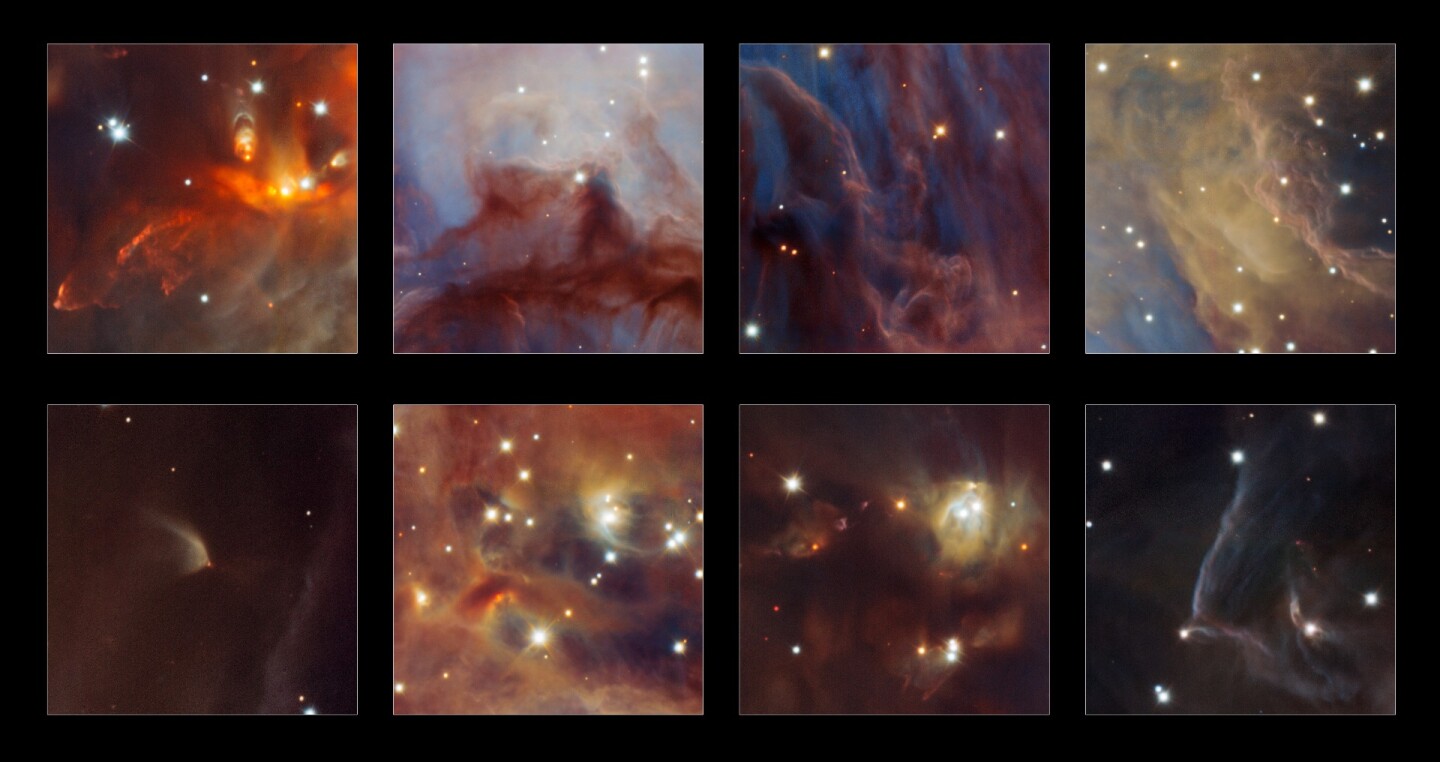An international team of astronomershas succeeded in capturing the most comprehensive infrared view ofthe famous Orion Nebula to date, highlighting a surprising amount offailed stars and small planetary bodies. The image wassnapped using the European Southern Observatory's (ESO) Very Large Telescope (VLT) in conjunction with the infrared capabilities of theobservatory's High Acuity Wide-field K-band Imager (HAWK-I)instrument.
The Orion Nebula is located roughly1,350 light-years from Earth, forming a part of the "sword" ofthe Orion constellation, and can be viewed by the nakedeye as a small fuzzy patch on a clear night. We are able to observethe nebula without the aide of a telescope thanks to the largequantity of ultraviolet light thrown out by the stars embedded withinit, which works to illuminate the surrounding clouds of gas and dust.
The HAWK-I mounted on the VLToperates in the near-infrared spectrum range, which allows thetelescope to look past the nebula's choking clouds of interstellarmaterial, and observe the stars and planetoids that are being createdwithin. The ability to obtain an accurate count of these bodiesrepresents a vital step towards gleaning an insight regarding thestar formation processes that are thought to be taking place insidethe 24 light-year wide Nebula.
It took the HAWK-I-augmented VLTseveral exposures to collect the light necessary to produce thestunning image. An analysis of the data indicated the presence of 10times the amount of brown dwarfs and very-low-mass planetary objectsthan would be expected in line with current theories on starformation in the nebula.
Brown dwarfs are essentially substellar bodies that failed to gather enough mass during their formative period to sustain the nuclear fusion process raging at the heart of other main sequence stars.

The overabundance of these failed starsand low-mass planetary bodies has led the team to believe that theremay be fewer active star formation regions at work within the OrionNebula than had previously been believed. The discoverymay help to constrain theories explaining how star formation unfoldswithin the stellar nursery.
Oneof the methods used to understand star creation is to observe nebulaesuch as Orion, and create a tally of the number of different bodiesthat are formed within via their masses. This cosmic inventory isknown as an Initial Mass Function. By calculating the IMF of a star formation region, scientists areprovided a solid basis on which to begin formulating theoriesregarding what processes could have occurred to create this ratio ofbodies.
Dueto the Orion Nebula's relative proximity to Earth, it has become avaluable proving ground used by astronomers to develop and test theirstar formation theories. The overabundance of brown dwarfs andlow-mass planetary bodies skewing the IMF for the nebula will surelyrefine these models further, and by understanding how nearby nebulaeform stars, we can gain a better comprehension of how their distantcousins do the same.
Unfortunately, present dayobservatories lack the ability to directly image the low-massisolated planetoids. However, the completion of the ESO's plannedEuropean Extremely Large Telescope (E-ELT) will allowastronomers to further explore the enigmatic nebula-shrouded bodies.
The video below highlights the impressive depth of the new infrared image.
Source: ESO





